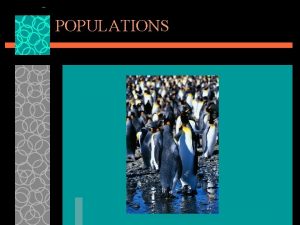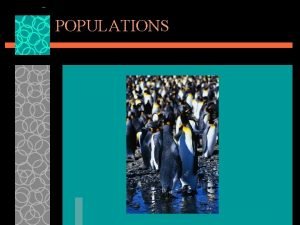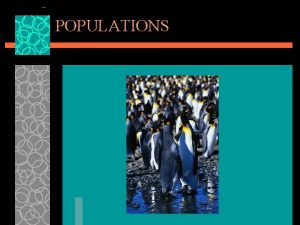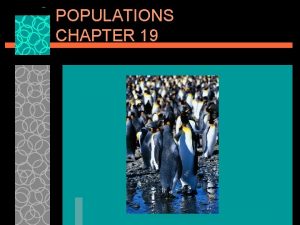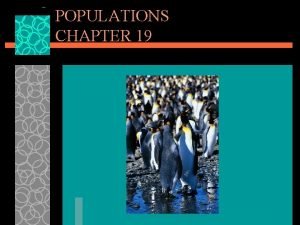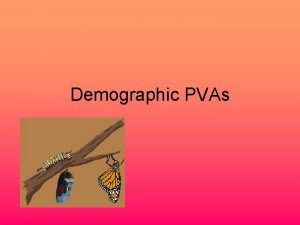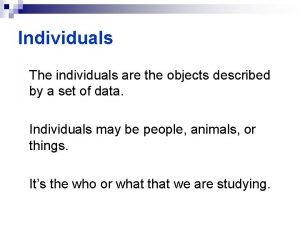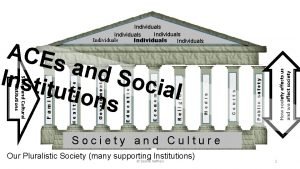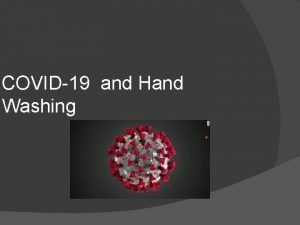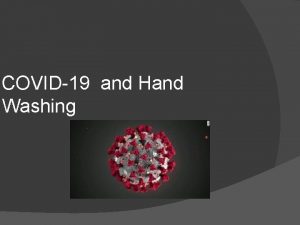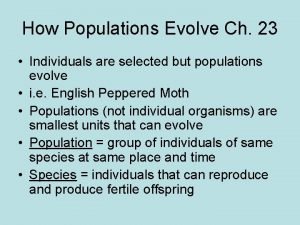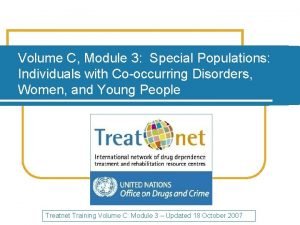POPULATIONS POPULATIONS u Populationall of the individuals of
























- Slides: 24

POPULATIONS

POPULATIONS u Population-all of the individuals of a species that live together in one place at one time. u Demography-the statistical study of populations. It is used to predict how the size of a population will change.

KEY FEATURES OF POPULATIONS 1. Population size n n n – is the number of individuals in a population. – has an important effect on the ability of the population to survive. A small population is more likely to become extinct: n n n -in the case of random events or natural disaster -due to inbreeding where the population is more genetically alike. Recessive traits are more likely to appear. -with reduced variability it is harder to adapt to changes.

KEY FEATURES OF POPULATIONS, con’t 2. Population density n – the number of individuals in a given area. n – if they are too far apart they may only rarely encounter one another resulting in little reproduction.

KEY FEATURES OF POPULATIONS, con’t Population size is limited by: density-dependent factors n n n density-independent factors Disease Competition Predators Parasites Food Crowding n n n n n The greater the population, the greater effect these factors have. Ex. Black plague in the Middle Ages – more deaths in cities n Volcanic eruptions Temperature Storms Floods Drought Chemical pesticides Major habitat disruption (as in the New Orleans flooding) Most are abiotic factors

KEY FEATURES OF POPULATIONS, con’t n n 3. Dispersion – the way in which the individuals are arranged. Most common

Characteristics of Populations n Sex ratio: proportion of males to females n Can affect the growth or decline of a population over time n Ex – turtles which depend on temp to determine the gender of the offspring are at risk of extinction due to the likelihood that their sex ratio will skew completely to one sex

Characteristics cont n Age structure: the age distribution of a population describes the relative numbers of individuals of different ages n Three relationships for age structure 1. 2. 3. Increasing rapidly Stable Decreasing


Population Size Change Population size change is determined by: n n n Births Deaths Immigrants Emmigrants Can calculate the growth rate by n (births + immigrants) – (deaths + emmigrants)

Growth Rate Example n Suppose we have a population with the following: n n Birth rate – 214 offspring per 1000 individuals (214/1000 or 0. 214) Death rate – 78 per 1000 individuals (78/1000 or 0. 078) Immigration – 7 per 1000 individuals (7/1000 or 0. 007) Emmigration – 24 per 1000 individuals (24/1000 or 0. 024)

PREDICTING POPULATION GROWTH n n n Model: A hypothetical population that has key characteristics of the real population being studied. Used by demographers to predict how a population will grow.

PREDICTING POPULATION GROWTH, con’t n n n Nearly all populations will tend to grow exponentially as long as there are resources available. Two of the most basic factors that affect the rate of population growth are the birth rate, and the death rate. r(rate of growth)=birth rate – death rate

PREDICTING POPULATION GROWTH, con’t n n Exponential growth curve: population growth plotted against time. As a population gets larger, it also grows at a faster rate. This is the maximum population growth under ideal circumstances. Includes plenty of room for each member, unlimited resources (food, water) and no hindrances (predators). FACT: No population exhibits this type of growth for long.

PREDICTING POPULATION GROWTH, con’t n n n Logistic model: This model accounts for the declining resources available to populations as they grow. It assumes the birth and death rates are not constant. As the population grows, births decline and death rises. Eventually birth=death so the population stops growing. Carrying capacity (K): The number of organisms of one species that an environment can support indefinitely.

PREDICTING POPULATION GROWTH, con’t Two modes of population growth. The Exponential curve (also known as a Jcurve) occurs when there is no limit to population size. The Logistic curve (also known as an S-curve) shows the effect of a limiting factor (in this case the carrying capacity of the environment).

POPULATION GROWTH STRATEGIES There are 2 ways a population can prosper: 1. Depends on the rate of growth (r) 2. Influenced by the carrying capacity (K)

POPULATION GROWTH STRATEGIES, con’t r-strategists: characterized by exponential growth, which results in temporarily large populations, followed by sudden crashes in population size. Ex. Insects, bacteria, some plants live in unpredictable and rapidly changing environments Reproduce quickly when conditions are favorable Many offspring: small, mature rapidly, no parental care r = rate of growth

POPULATION GROWTH STRATEGIES, con’t K-strategists: characterized by a high degree of specialization. Ex. Trees, whales, tigers, etc. Live in stable and predictable environments Can compete effectively Reproduce late in life Few offspring: large, mature slowly, often much parental care K = carrying capacity

POPULATION GROWTH STRATEGIES, con’t Human Populations: K- strategist characteristics In recent times however, man has learned to expand the carrying capacity of his environment by increasing food supply, combating pests and curing diseases. Can Earth support this increase? Damage to the planet will eventually reduce the carrying capacity for humanity and slow the growth of the human population. http: //www. census. gov/popclock/

HOW POPULATIONS EVOLVE • Charles Darwin: – Natural selection causes biological diversity. • Modern version: – Populations contain individuals with different versions of genes called alleles. – Alleles that improve the chances of survival and reproduction are favored and become more common. – Changes are caused by mutations in DNA.

Hardy-Weinberg Principle • In 1908 G. H. Hardy and Wilhelm Weinberg showed that dominant alleles do not replace recessive ones. • The Hardy-Weinberg Principle states: populations do not change unless evolutionary forces act upon them.

Hardy-Weinberg Principle, con’t • An important way of discovering why real populations change with time is to construct a model of a population that does not change. • This is just what Hardy and Weinberg did. • Their principle describes a hypothetical situation in which there is no change in the gene pool (frequencies of alleles), hence no evolution.

This powerpoint was kindly donated to www. worldofteaching. com http: //www. worldofteaching. com is home to over a thousand powerpoints submitted by teachers. This is a completely free site and requires no registration. Please visit and I hope it will help in your teaching.
 Individuals don't evolve populations do
Individuals don't evolve populations do đặc điểm cơ thể của người tối cổ
đặc điểm cơ thể của người tối cổ Mật thư tọa độ 5x5
Mật thư tọa độ 5x5 Các châu lục và đại dương trên thế giới
Các châu lục và đại dương trên thế giới Tư thế worms-breton
Tư thế worms-breton ưu thế lai là gì
ưu thế lai là gì Thẻ vin
Thẻ vin Tư thế ngồi viết
Tư thế ngồi viết Cái miệng nó xinh thế chỉ nói điều hay thôi
Cái miệng nó xinh thế chỉ nói điều hay thôi Các châu lục và đại dương trên thế giới
Các châu lục và đại dương trên thế giới Từ ngữ thể hiện lòng nhân hậu
Từ ngữ thể hiện lòng nhân hậu Bổ thể
Bổ thể Tư thế ngồi viết
Tư thế ngồi viết Giọng cùng tên là
Giọng cùng tên là Làm thế nào để 102-1=99
Làm thế nào để 102-1=99 Thể thơ truyền thống
Thể thơ truyền thống Chúa yêu trần thế
Chúa yêu trần thế Hổ đẻ mỗi lứa mấy con
Hổ đẻ mỗi lứa mấy con đại từ thay thế
đại từ thay thế Diễn thế sinh thái là
Diễn thế sinh thái là Vẽ hình chiếu vuông góc của vật thể sau
Vẽ hình chiếu vuông góc của vật thể sau Công thức tiính động năng
Công thức tiính động năng Thế nào là mạng điện lắp đặt kiểu nổi
Thế nào là mạng điện lắp đặt kiểu nổi Tỉ lệ cơ thể trẻ em
Tỉ lệ cơ thể trẻ em Lời thề hippocrates
Lời thề hippocrates

























